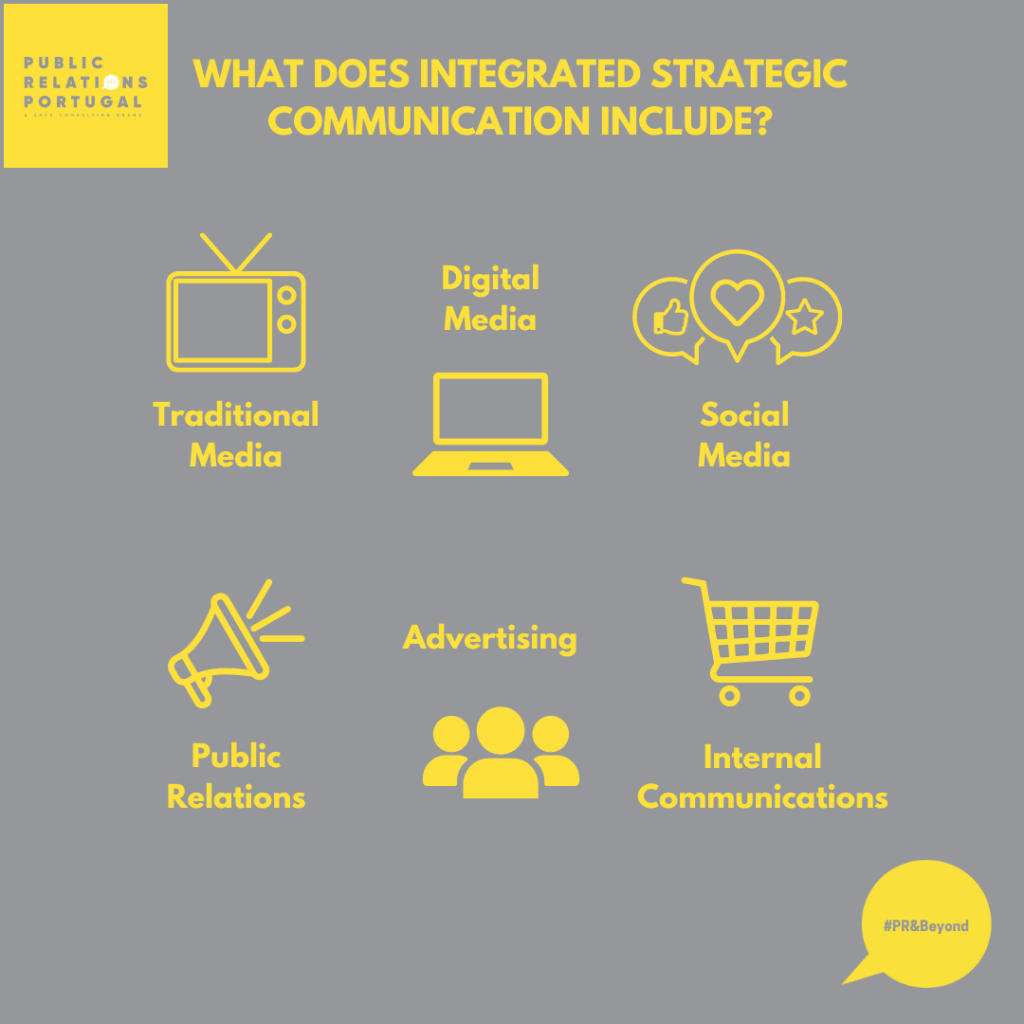Everything you must know about creating and implementing a successful integrated strategic communication plan for your organization in 9 easy steps for you to follow.

Inconsistencies in your approaches, messages, and target audience can undermine any strategy you decide to implement. Executing a successful integrated strategic communication approach by unifying and coordinating all communication efforts within your organization will reduce redundancy and enhance effectiveness. As a result, this will lead you to success in your strategies, guarantee you to reach your target consumers or clients, boost brand growth y reputation, and improve cost efficiency.
But why exactly is integrated strategic communication so important for your business?
One of the many benefits of implementing an Integrated Strategic Communication (ISC) strategy is that you make certain your message reaches the target and desired audience. As a result, this will ensure your efforts, time, and money are being properly used. In other words, an integrated strategic communications plan makes a business more profitable.
ISC also ensures that the messages are consistent across all channels which in term leads to a strong brand reputation, a cohesive brand identity, enhances the brands values and, as a result, maximizes the impact of marketing efforts, client’s engagement, and overall growth.
In simple terms, ISC guarantees that the campaign objective is being accomplished. This is something organizations take for granted as they assume the entire team and all departments know what the end goal and objectives are, but this is almost always not the case. Additionally, ISC communicates these necessities with the right people so everyone and everything is on the right page and moving towards the end goal.
lastly, a key aspect in accomplishing this goal is to establish an objective that can be measured and evaluated by the team. Many times, firms and leaders communicate projects or objectives that cannot be assessed, and often the employees get confused with the final goals. Essentially, if an objective cannot be measured then it is not a true objective.

What does Integrated Strategic Communication include?
-
Traditional media
-
Digital media
-
Social media
-
Relaciones Públicas
-
Advertising
-
Internal communications
9 Steps for an Integrated Strategic Communication Plan:
1. Identify the objective of the strategy:
Firstly, it is important to know exactly what you want to achieve with this communication strategy. This way, there’s a clear goal and it’s easier for the entire team and organization to follow each step.
2. Recognize and understand who the target consumers or clients are:
Additionally, it is a key aspect to identify exactly who the target consumer or client is for your strategy and if there is more than one. Here is an article with 7 ways to help you determine your target consumer.
3. Know all you can about your target consumer or client:
Once the target consumer or client is identified, research and learn all you can about them: Who are they? What are their needs? What do they know and what don’t they know?
4. Identify the best points of contact between the consumers or clients and the organization:
At this point, learn what channel/platform is the best method to contact your target audience. These can be physical or virtual points of contact but make sure it’s a place where your audience will receive and attend to the message.
5. Identify what behaviors you want to influence the consumers or clients:
Equally important, you should know what behaviors you want to influence the consumers or clients through this strategy.
6. Create a communication strategy for your consumers or clients:
Now that you know your audience and exactly what you want to achieve, create a message that will really persuade and resonate with them. Remember to alter the message depending on the different groups of audiences.
7. Send the message regularly:
Above all, it’s important to repeat the message to really reach the audience and stand out from the many messages and information overload that they are exposed to daily.
8. Observe and evaluate the strategy:
At the same time, analyze the performance and effectiveness of the strategy and identify any weaknesses.
9. Modify the message or strategy based on results:
Finally, if the strategy is not effective, make appropriate changes. As time passes, the strategy will also begin to lose functionality and relevance, so identify and change as the needs in your organization evolve.
With this easy step-by-step guide, you have your first steps to achieve success with your organization with the help of an integrated strategic communication approach. If you would like to know more about integrated strategic communications and how a professional communication consultancy can really help you achieve the best results for your business read this other article on what there is to know about strategic communication consultancies.
Source: Ristino, R. J. (2013). Integrated Strategic Communication: Influencing and Changing Public Opinion and Behavior. Charleston: CreateSpace independent Publishing Platform.